An overview of remote education and WebRTC. The market niches, challenges and solutions.
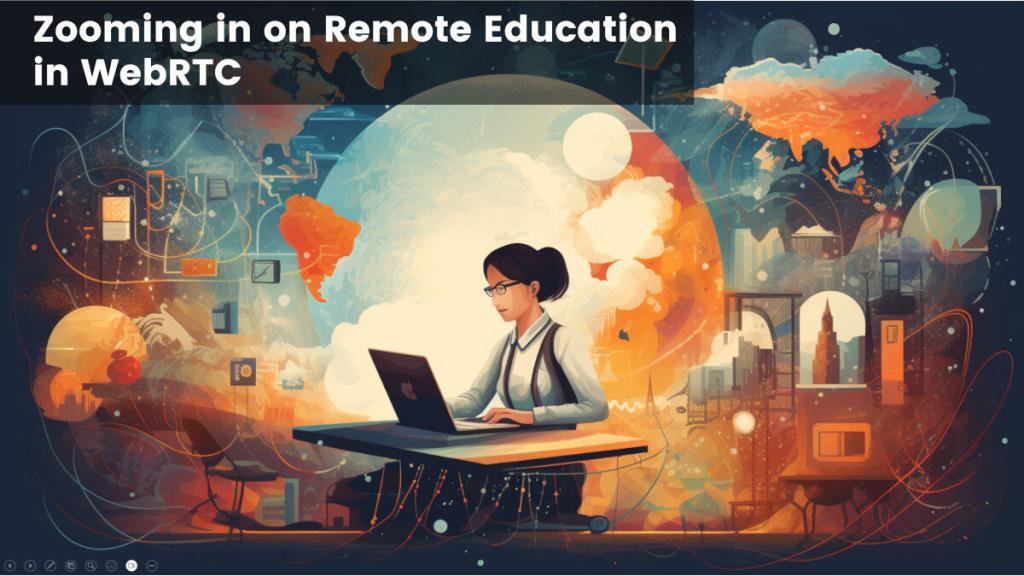
Whenever a video meetings company starts looking at verticals for the purpose of targeted marketing, one of the verticals that is always there is education. We’ve seen this during the pandemic – as the world went into quarantine mode, schools started figuring out how to teach kids remotely.
The remote education market is not just schools doing remote video calls. It is a lot more varied. I’d like to explore that market in this article.
Table of contents
- How big can remote education really get?
- Me? Remote education?
- The role of WebRTC in remote education
- Top down decisions; sometimes
- Live, online and in-person
- Hybrid
- Moderation
- Assessment
- Collaboration and whiteboarding
- The challenge of engagement
- The challenge of engagement (part 2)
- Asymmetry in remote education
- Training the educators
- A matter of costs
How big can remote education really get?
There are around 2 billion children in the world. Over 80% of them attend schools.
Some 235 million higher education students are out there as well around the globe.
During the pandemic, a lot of them were online, taking classes remotely. For multiple hours each day.
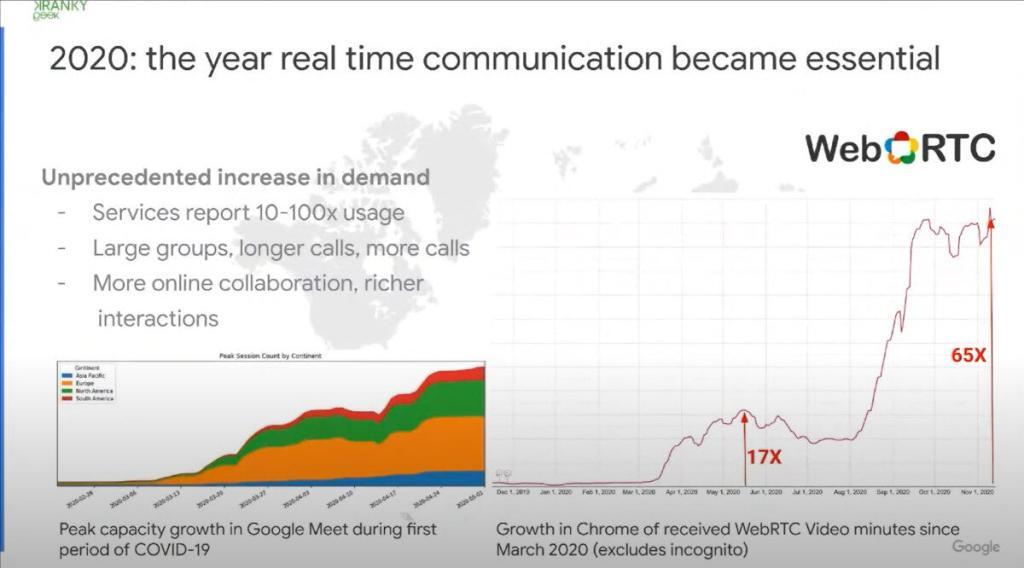
The slide above is from Kranky Geek 2020. In this session, Google talked about their work on WebRTC in Chrome.
Here they shared the increase in video minutes during the initial quarantines. The huge spike there starts at around the August/September timeframe, when schools start.
Remote education is here to stay. Not with its increased usage of 10-100x, but definitely bigger than in the past. There are many places where remote education can fit – and not only for emergencies such as the pandemic.
Me? Remote education?
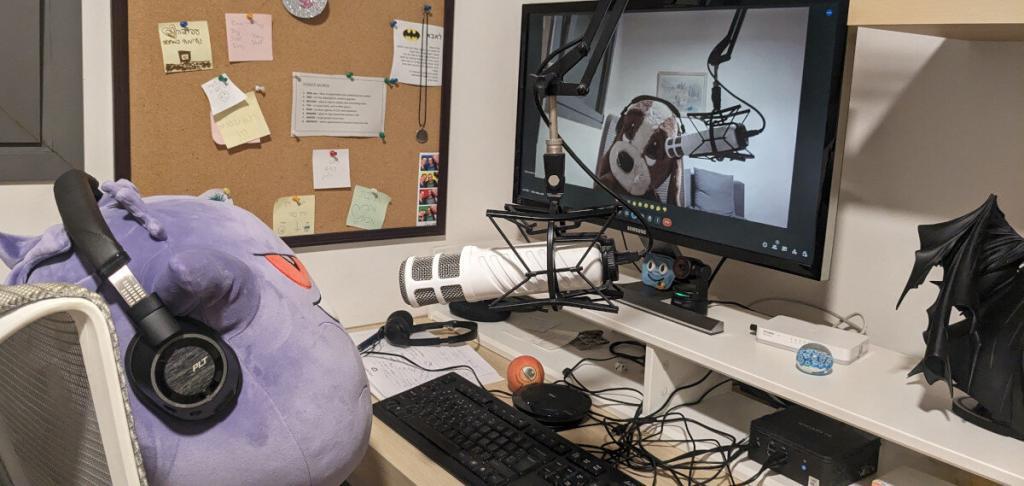
Like everyone else, my kids went through the process of remote education during the pandemic. Here, the Ministry of Education went all-in with Zoom for schools (along with Google Classroom and Microsoft Office – go figure). Since then, our kids have on and off private tutors doing classes remotely sometimes. And now, when we have a war raging between Gaza and Israel, depending on where you live, you might be studying from home or physically in school.
I had my share of consulting with education organizations across the globe. Some focusing on schools, others with universities and some with private tutoring. It was always fascinating to see how such markets are distinctly different from each other, and how remote education also takes different shapes and sizes based on the country.
And then there are my own online courses, with their associated office hours and AMAs.
The role of WebRTC in remote education
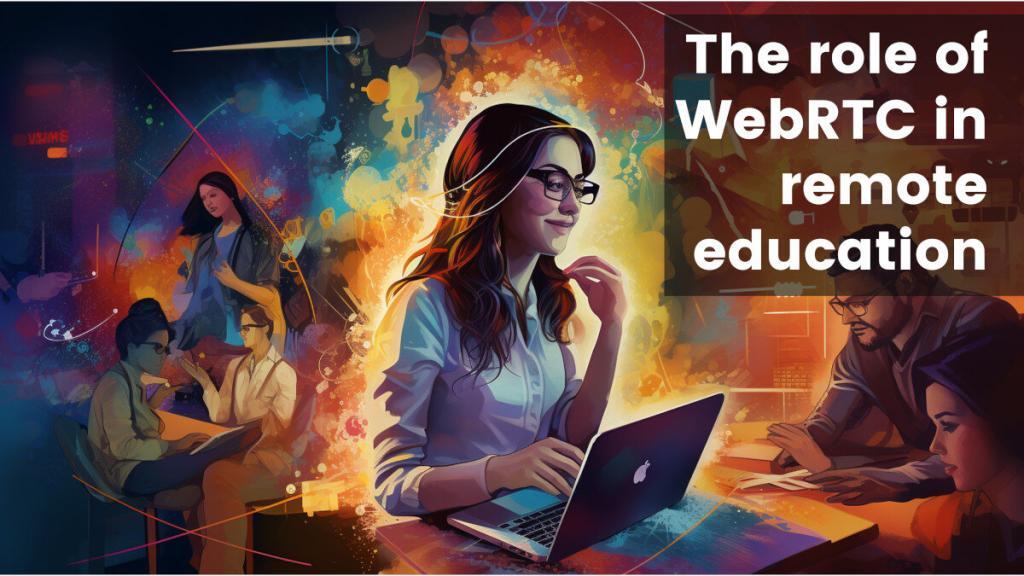
WebRTC plays an important role in the education market. Besides offering video communications, it also enables the ability to mesh the communication experience directly into the LMS (Learning Management System) or the SIS (School Information System), offering a seamless and tailored experience for both the teacher and the learners – one that enables the educators to implement various pedagogies.
☝️ Remember here that WebRTC is a synchronous technology – live, real-time voice and video communications. A large chunk of the education market is leaning heavily on asynchronous learning (recorded videos, texts to read, etc). These are not covered in this article.
Here are some market niches and use cases where you will find WebRTC in remote education.
Group lessons

The simplest one to explain is probably group lessons. The classic one would be the pandemic use case, where during quarantine, schools went all virtual – classes were conducted online.
Remote group lessons aren’t limited to schools either – they are done in universities, private group tutoring, etc.
Main challenges here include:
🔶 Moderation tools for the teachers. Ones that are simple to use while conducting the lesson itself
🔶 Collaboration tools to make the lessons more engaging. Maintaining engagement in online group lessons is the biggest challenge at the moment, especially for younger learners
🔶 Authentication and authorization of users. Lots of anecdotal stories around this one throughout the pandemic
One thing that is raised time and again with group lessons, especially in schools, is the need (and inability) to get the students to keep their cameras on. This is a huge obstacle to effective learning, and something that needs to be taken into account.
Another important thing that needs to be fleshed out early on here, is who is the client – is it the teacher or the students. Whoever the system is geared towards will set the tone to how the solution gets designed and implemented.
One-to-one tutoring

These are mainly one on one lessons conducted remotely.
Outside of the domain of classic education, a lot of classes are actually conducted in such a way. Here are a few anecdotal stories from recent years that I’ve learned about:
🔶 A dear friend who is learning to play the piano. Remotely. She travels a lot between the US and Israel, and takes her lessons from everywhere through her iPad
🔶 Another friend, taking 1:1 drawing lessons
🔶 Online chess lessons for kids in our community
🔶 My son’s friend, learning C++ on Unreal engine, taking 1:1 lessons
🔶 My son, a few years ago, when he was 10 or so, learning to build online games using nocode game engines from an 18 year-old who lived two cities away
🔶 My wife took online dance lessons to specialize in Salsa from a renowned instructor abroad
Besides the collaborative, engagement level and nature of such lessons, it is important to note that they aren’t suitable for everyone. Some teachers are more natural in these, and some students can learn effectively in such a manner while others struggle (I have both examples at home).
An interesting use case here that I’ve seen is math and English (!) tutors from India and China teaching remote kids in the UK and the US. Why? Simply because they are cheaper than using local teachers. Then there was the opposite – rich Chinese families getting one-to-one English tutoring for their kids from US teachers. Go figure.
One-to-one tutoring comes in a lot of different shapes and sizes.
MOOCs (Massive Open Online Courses)

MOOCs were all the rage 10 years ago. Their market is still consistently growing.
MOOCs are simply large online courses that are open for people around the globe. Some of them are collaborative, while others are mainly lecturer driven. Some allow for asynchronous learning while others are more synchronous in their nature. Both the asynchronous and synchronous learning modes in MOOCs offer self-paced learning (at least to some degree).
WebRTC finds its way into MOOCs for their synchronous part, when that requires live video sessions – either between lecturers and students or between student groups in the more collaborative courses.
Proctoring

Proctoring isn’t about learning, but about taking exams. Remote proctoring enables taking exams at the comfort of one’s home or office without going to the classroom.
With proctoring, the user is required to open up his camera and microphone as well as share his screen while taking the exam. The proctoring application takes care of checking that other tabs aren’t being opened and that nothing fishy is taking place (as much as possible). WebRTC is used to gather all that realtime audio and video data and record it. If needed, these recordings can be accessed by human proctors later on.
It should be noted that for proctoring, there are a lot of requirements around circumventing the ability to cheat on the exam. This includes things like monitoring applications used during the exam, maintaining focus on the exam page, etc. To achieve this, most proctoring solutions end up as PC applications (usually using Electron) which the student needs to install on his machine in order to take the exam. The innards of the proctoring application will end up using WebRTC in a web application – simply for its speed of development and the use of the WebRTC ecosystem.
Coaching

While similar to classic education, coaching is slightly different. In its essence, these can be 1:1 sessions or small group sessions where issues and challenges in certain areas get fleshed out. In group lessons and 1:1 tutoring, a lot of the focus is on collaboration features. Here, in many cases, it will be more on the video of the participants and the need to bring them together.
Another interesting aspect of coaching is the platform it gets attached to – either directly or indirectly. Coaching often comes bundled as a larger course/training offering, mixed with in-person meetings, reading/presented materials and the coaching sessions themselves.
The LMS and SIS systems are usually also lacking in the coaching platforms. Usually, these will be geared towards flexible use and at times an integrated payment system.
Webinars

Webinars are a form of lessons that is conducted over the internet, mostly for businesses to assist in marketing and sales efforts. Depending on the level of interactiveness of the webinar, the need and use of WebRTC will be needed.
In the past, webinars were usually conducted via specialized downloadable applications, where the content was mostly slide decks and the voice of the speakers. The interaction with the audience was done via text messages and organized Q&A. Over time, these solutions became richer and more sophisticated, adding video communications as well as the ability of the audience to “join the podium” if and when needed.
Using WebRTC here enabled getting rid of the application download requirement and increased the level of interactivity quite considerably.
The intersection of education and healthcare

Education and healthcare are bound together. I’ve shown that a bit in my WebRTC in telehealth article, looking at it from the remote training of healthcare topics perspectives. I want to take a different angle on the same topic here. I’ll do that by showcasing two interesting use cases I’ve been privy to a few years back.
#1 – Dance lessons in cancer
I heard this one from a dancer who had cancer and healed. Women with cancer have it hard. Chemo is brutal – it seeps out the energy and causes hair loss. This means women don’t want to go outside that much. Here, being able to bring them remotely to a dance lesson can be a real benefit to them, especially if they love(d) dancing. They won’t go physically – not wanting to meet people outside and the stairs that come with it – along with the energy it takes. But they will be willing to dance – maybe.
Remote dance lessons for this niche is beneficial. Not from an educational standpoint but more from a mental health one.
#2 – Video in class for students in hospitals
Another vendor I worked with briefly was assisting school kids who had to be treated in hospital or just stay home for prolonged periods of time (think weeks or months at a time). Their solution was to bring a video conferencing system and rig it in the physical classroom of the kid as well as where he is located, be it home or a hospital bed.
This way, the kid could join the classes as well as stay connected to other classmates during recesses. The main purpose here isn’t really the teaching part, but rather to make sure the student stays in contact with peers in his age group and not be secluded during that period of time.
Is this a use case in education? In healthcare? I can’t really say…
ERT (Emergency Remote Teaching)
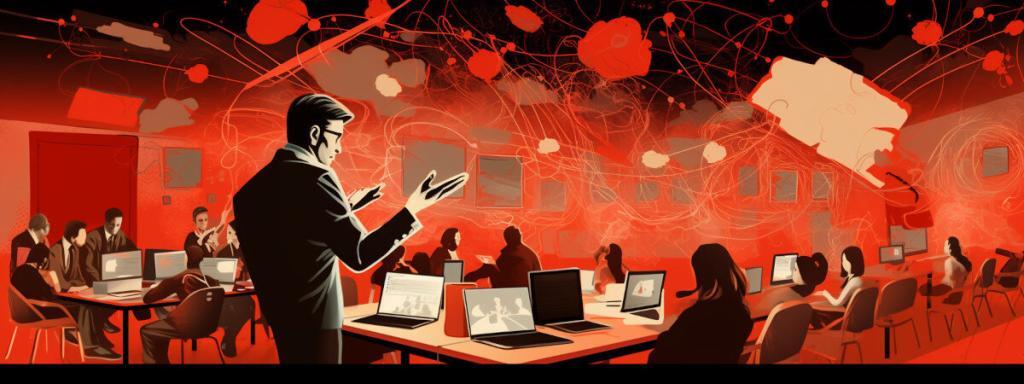
The pandemic showed us that remote education is challenging but might be necessary. We were all quarantined for long periods of time, with school across the globe going remote.
Here in Israel, when clashes with Gaza or Hezbollah in Lebanon flare, schools shift to remote learning. It isn’t frictionless or smooth, but it is the solution we have to try and continue educating kids here.
The most crucial aspect of ERT is that teachers are forced to change their teaching setting with no preparation. In Israel, at least, the pandemic didn’t prepare teachers for the current war – it feels like the education system in Israel learned nothing from the pandemic wrt to remote teaching ☹️
Top down decisions; sometimes
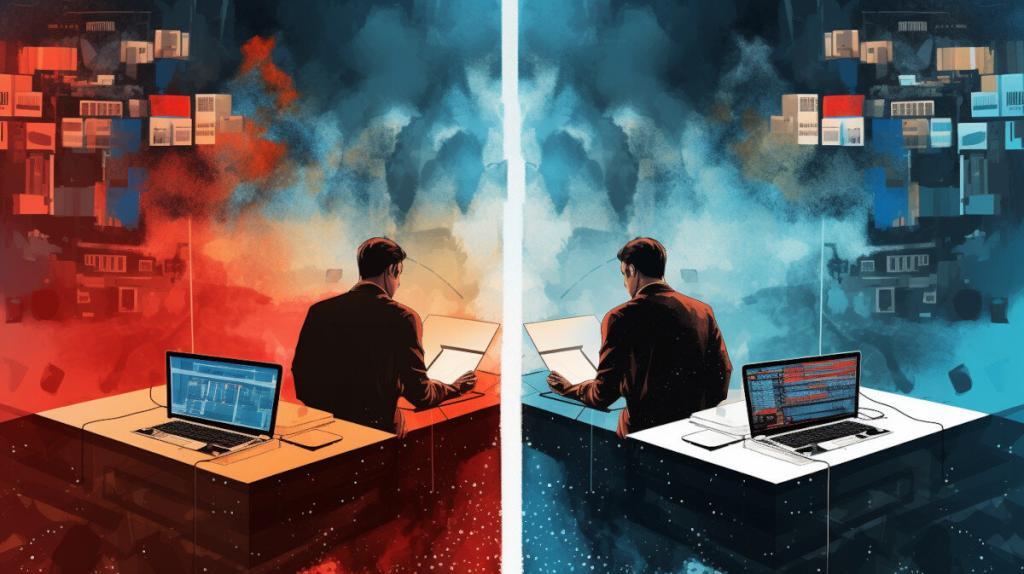
Education is interesting. Especially the institutional ones of schools.
In some countries, decisions are made top down while in others, there’s more autonomy kept at the school level or the district level.
Here are a few things I learned asking the question on LinkedIn, about what tool was used during the pandemic for virtual classes across the globe:
- Israel. Where I live. Was mostly Zoom during the pandemic
- There was also a bit of Google Meet and some BigBlueButton, due to its integration with MASHOV (an SIS in Israel)
- The government struck a deal in education for Google Classroom country-wide
- There’s also Office available for free for all students
- And Zoom was the decision for virtual classes
- This year, it all changed to Google Meet, presumably due to security concerns, but more likely this was due to pricing (Zoom renewal cost money while you get Google Meet and Microsoft Teams for free with Google Classroom and Office respectively)
- Zoom hurried up with a statement that it is secure and now available for free for the education system in Israel
- As the saying goes – it’s all about the money
- Bulgaria used Jitsi Meet (through the Shkolo platform); later replaced by Microsoft Teams. Both with government provided accounts
- Colombia. Most public schools and the university system relied heavily on Microsoft Teams. Private schools and universities were about an even split between Zoom and Microsoft Teams
- Austria was mainly Microsoft Teams
- Russia – Zoom
- The United States was mostly Zoom. It wasn’t mandated, but just how things ended up in most places
- UK. A private school in London opted for Microsoft Teams. Public schools were left to figure out their own solution
- Argentina. Zoom, though I am not sure if everywhere and if the decision was top down or bottom up
- India. Primarily Microsoft Teams and occasionally Zoom. Mainly because Microsoft Teams had better and stronger channel partners in India, being able to offer better deals
- France. Started with Zoom and Jitsi Meet in schools. Now, the government has built a large scale BigBlueButton infrastructure for virtual classrooms
This is by no means complete or accurate, but it shows a few important aspects of education:
🔶 In some countries, decisions on the tools to use is taken top down, while in others, each district or school is left to autonomously make a decision
🔶 Like in many industries, but probably more so, appearances matter. Losing Israel for Zoom was bad publicity. They had to fix that quickly by renewing the service for free. BTW – the damage is already done, my kids are now using Google Meet at school and there likely isn’t a way back
Live, online and in-person

Education is mixed. It isn’t all virtual and isn’t all in person.
My own WebRTC Courses are online, but not live. The lessons are pre-recorded. I offer monthly AMA meetings as part of them which are online and live.
I took a CPO course last year. It included in person meetings (3 full days), weekly live sessions as well as pre-recorded information.
My kids are now learning some days remote and some days in-person in the school.
Some countries had recorded/broadcasted lessons alongside virtual live classes during the pandemic, creating from them a full set of learning materials that students can use moving forward.
👉 The LMS (Learning Management System) used needs to take all these into account, enabling different learning strategies and different content types. Your own service needs to be able to figure out what works best.
Hybrid

The term Hybrid Learning refers to any form that incorporates online and offline learning. This is slightly different from how we define hybrid meetings.
- As an example in Israel at the moment, in the current “war setup”, students go physically to school a few days a week and the rest they learn asynchronously or synchronously from home.
- Another example of hybrid learning is when students work with laptops in the traditional classroom.
Allowing a student to join remotely to a class taking place in-person is a real challenge, but one that needs to be dealt with as well. This isn’t any different from hybrid meetings in enterprises in terms of the basic need. The difference is likely in size and complexity.
Most classes aren’t geared to this. From the placement of the cameras in the class, to the way the lessons are conducted and to the way teachers need to split their attention between in person to remote students.
👉 In most places, going hybrid in education is an intentional decision that can be made only for select use cases and in a limited number and types of institutions.
Moderation

Who is allowed to join a virtual lesson? Should the teacher approve each student joining? How do you know who is online? Who is actively listening? Should anyone be automatically allowed to speak up? Share their screen? Is there a way to check if the student goes “off the reservation”, doing other things in other browser tabs or on his phone in parallel?
All these are hard questions with no good answers.
Moderation in education must take place – especially for group lessons. This has two purposes:
- Maintain a semblance of order
- Let the teacher focus on teaching
Oftentimes, moderation tools deal with a semblance of order but less with the focus of the teacher or teaching.
The decision in Israel for example to go for Google Meet makes total sense simply because authentication and identity is managed by Google Classroom already. Classroom is acting as the LMS as well, or at least the hub for students and teachers. Having a tighter integration means some of the moderation requirements can more easily be met.
👉 It isn’t only about what can be moderated, but how and with what level of friction
Assessment
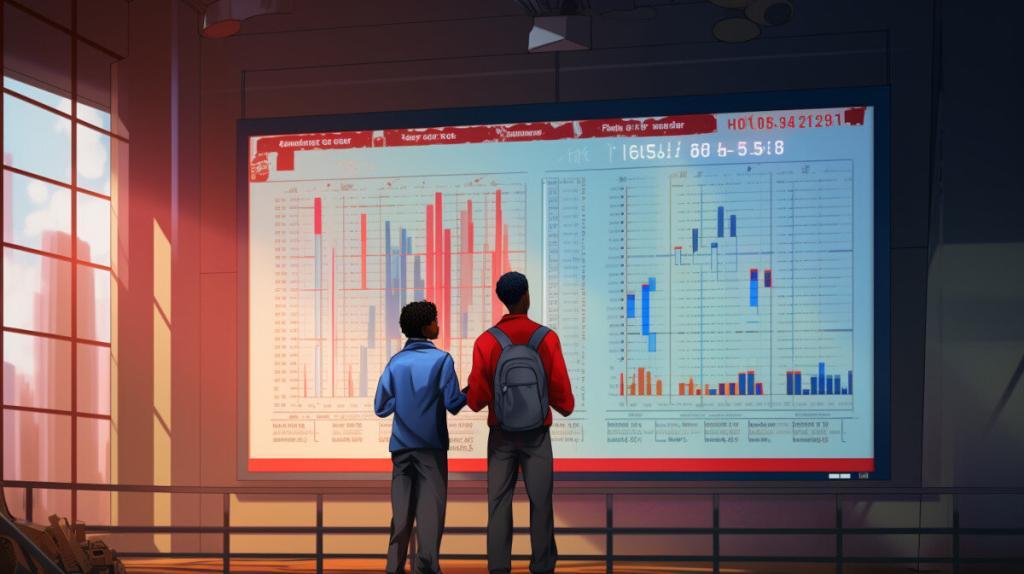
How are assessments taking place in online learning?
In the traditional classroom, teachers physically saw the students and could easily gauge their level of attentiveness. To that, home assignments and tests were added.
Once going online, technology can come to assist the teachers and students, adding a layer of information to the assessment process. Dashboards can be built to make this data accessible.
Where does WebRTC fit in here? The same way it does in online meetings, where we see today a growing focus on incorporating transcriptions, meeting summaries and action items automatically. Similar LLM/generative AI technologies can be used to glean insights out of online lessons.
In many ways, this isn’t done yet. Probably because we’re still struggling with engagement (see below).
Collaboration and whiteboarding

How is collaboration done in education? Do we need the classing blackboard/whiteboard for teaching? How does that get translated to the digital, remote scenario?
Are we looking here for something as powerful and flexible as a Miro board or something simpler and less feature rich?
Is teaching math or physics similar to teaching languages or literature when it comes to collaboration and whiteboard?
How about Kahoot or similar polling/quiz capabilities? Do we make them engaging or boring as hell?
A lot of thought and energy needs to be diverted towards these types of questions, in trying to figure out what works best to increase engagement and improve the learning experience (and by extension, the learning itself).
The challenge of engagement

How do you define engagement in online synchronous lessons?
Is students opening cameras considered engagement?
Maybe students be engaged with their cameras turned off 🤔
Getting students to open up their cameras, having them choose to do so and keep the cameras on is a big issue in schools and in higher education.
In my son’s school, they are now shifting towards enforcing students to open their cameras… but allowing them to point that camera at the ceiling 🥴
Once you have cameras on, how does a teacher gauge the level of engagement of a student? How does he spare the time looking at 20+ students (36 in Israel classes) to understand if they are engaged or not while trying to present his screen to teach something out of his slidedeck?
👉 “Feeling the crowd” to understand if a topic needs further explanation or can the teacher move on to new topics is harder to achieve online than it is in person.
The challenge of engagement (part 2)

How do you get students engaged?
What type of collaboration solution do you need?
Which experiences should be baked into the solution?
My son decided to take up Russian. His friend speaks Russian with his parents, so he decided he wants to understand when they talk to each other (go figure). He decided independently to install Duolingo on his phone and has been taking their lessons for almost a year now 😲
He can now read Russian and know quite a few words.
A good friend of mine is learning German using Duolingo. We did a roadtrip in the US in February. I had to hear him learn in our long hours on the road. It was an interesting experience to see it from the side, trying to figure out how this magic happens.
Engagement and “gamification” are a main part of how Duolingo works and how it gets students back into their app over and over again.
👉 We haven’t quite cracked the formula of how to do this well in live virtual classes. There must be a way to get there, and when we find it, we will see great dividends from it.
Asymmetry in remote education

There are teachers and there are students. Who is the system designed to cater?
A simple question. Answering with “both” is likely going to be wrong most of the time.
I had a meeting at a large and prominent university in Europe a few years back. They wanted to build a video conferencing system for lectures. Have the professor in front of a large digital board showing tens of students joining remotely. Call it extremely expensive and unique. That was before the pandemic, so unrelated to it.
The question I had was who this system is for. Is it to sell students on a great remote experience or is it for the professor to feel important. I have my own answer here 🤔
You need to decide who the service you are developing is really there to cater – the teacher and his needs, assuming that students will simply join because they have little choice. Or the students, focusing on enticing them to join, collaborate and interact.
Doing both at the same time is a real challenge, and one that most vendors aren’t prepared to take yet.
👉 Figure out who your main user is. The teacher or the students. Or maybe the parents?
Training the educators

Someone needs to teach the teachers how to use the service. This is a real problem, especially when going mainstream.
When the pandemic started and Zoom was selected here in Israel, a lot of videos surfaced explaining how to use Zoom in the context of teaching with it. Last month, when Google Meet was the official solution, you started seeing the same occur for Google Meet here in Israel.
The differences between these two services may seem minor, but they are big for teachers who aren’t technically savvy.
Some private tutors for example shy away from remote lessons. Their reason is the inability to focus on the student during the lesson. Increase that by 20-40 students in a single lesson, many of them acting like prisoners trying to break out and figuring out ways to game the system called a virtual lesson, and you get to the need for teachers who know their way using the service inside and out.
👉 Onboarding and familiarizing teachers to the platform is just as important as the actual service, sometimes even more
A matter of costs

This one might just be an opinion of mine.
Remote education is a huge market. During the pandemic, it encompassed almost all the world’s students. And yet, the amount of money available to spend per minute is quite low.
In many cases, the deals are large (in front of a state or a country). Sometimes, they are smallish, in front of a single school. There’s money in these institutions, but in many cases, that money is spent elsewhere.
When going after the education market, it is vital to understand the buying habits and budget of the would-be purchaser beforehand.
👉 Solutions in the education market need to be cost effective and efficient from a WebRTC infrastructure point of view
🔸🔹🔸🔹🔸
Where can I help, if at all?
🎯 Online WebRTC courses, to skill up engineers on this technology
🎯 Consulting, mostly around architecture decisions and technology stack selection
